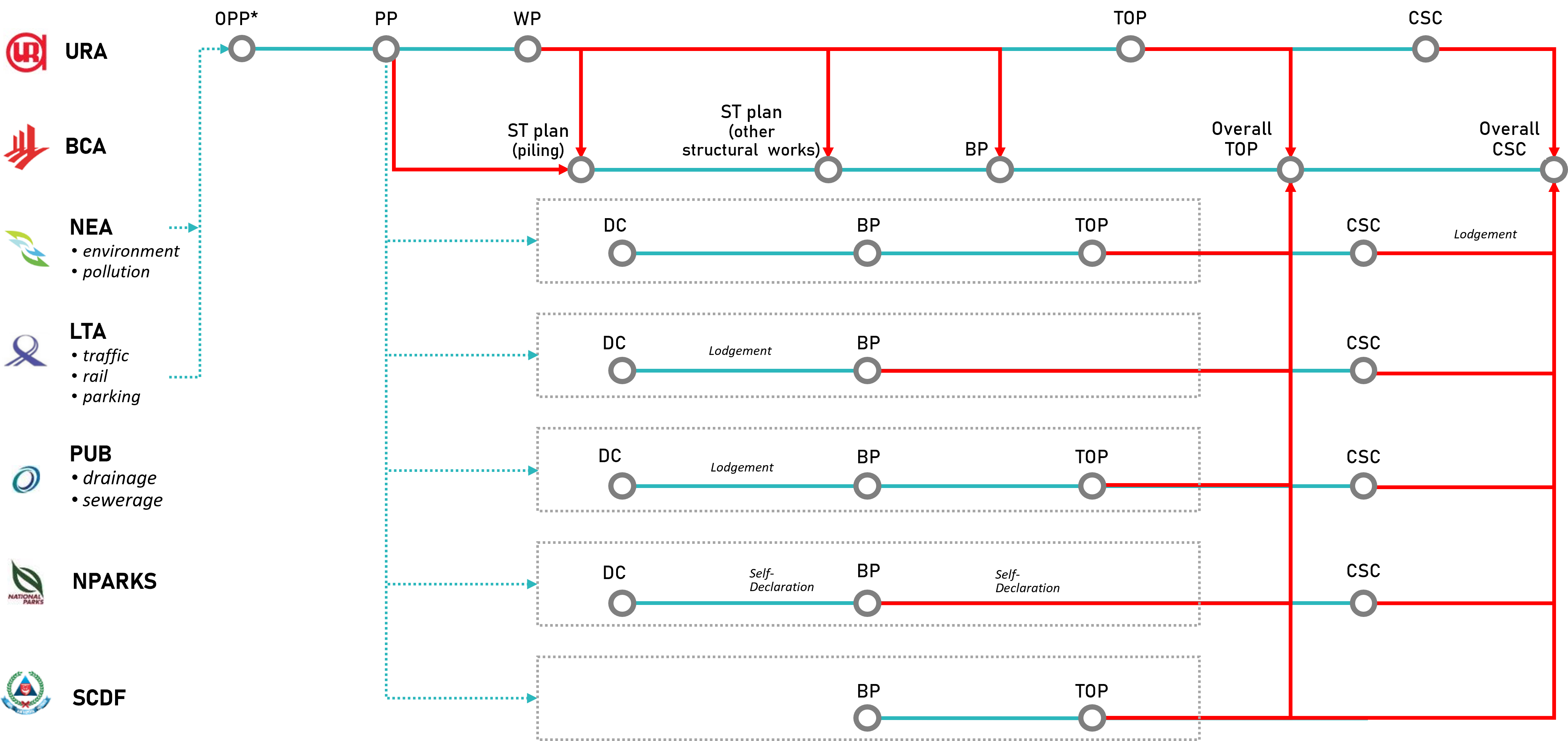Regulatory Approval Process under CORENET 2.0

Building developments in Singapore are regulated by 8 key regulatory agencies: BCA, URA, LTA, NEA, NParks, PUB, SCDF and SLA for land and strata matters.
Under today's regulatory approval process, building projects typically have to go through more than 20 approval touchpoints and the project team will receive responses separately from regulatory agencies.
New Regulatory Approval for Building Works (RABW) under CORENET X

The new Regulatory Approval process for Building Works (RABW) streamlines the multiple touchpoints into 3 key sequential submission gateways. This new process aims to promote upstream design coordination and minimise downstream issues.
These “3-Gateways” will be the default submission process for all building projects, except for building projects that will undergo the Direct Submission Process (DSP). More information on the DSP can be found below.
At each Gateway, coordinated BIM submissions, consisting of various building disciplines, will be submitted and reviewed collectively by agencies. This approach aims to ensure cross-agency issues and conflicts are identified and resolved upfront.
The new process undergoes refinements from time to time based on industry feedback and observations from pilot projects. Since the inception of CORENET X, agencies have conducted various reviews to address potential impact and concerns. Visit the Refinement to CORENET X Process page to find out more.